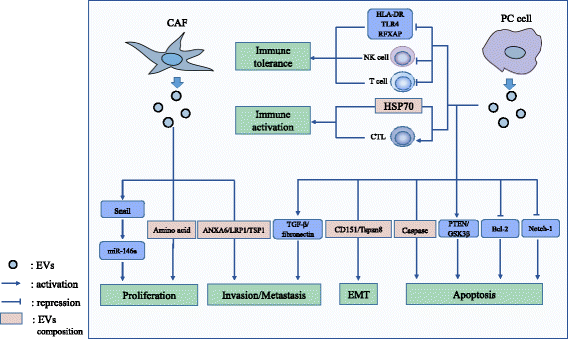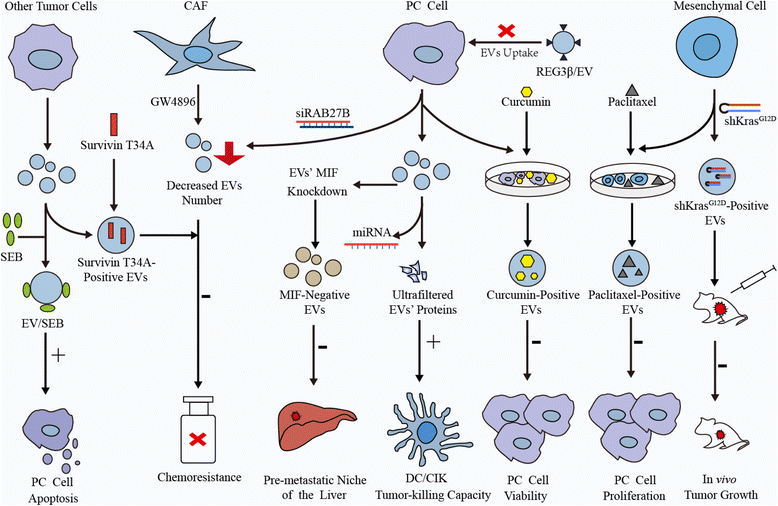Extracellular vesicles as mediators of the progression and chemoresistance of pancreatic cancer and their potential clinical applications
- PMID: 29304816
- PMCID: PMC5756395
- DOI: 10.1186/s12943-017-0755-z
Extracellular vesicles as mediators of the progression and chemoresistance of pancreatic cancer and their potential clinical applications
Abstract
Pancreatic cancer is one of the most lethal cancers worldwide due to its insidious symptoms, early metastasis, and chemoresistance. Hence, the underlying mechanisms contributing to pancreatic cancer progression require further exploration. Based on accumulating evidence, extracellular vesicles, including exosomes and microvesicles, play a crucial role in pancreatic cancer progression and chemoresistance. Furthermore, they also possess the potential to be promising biomarkers, therapy targets and tools for treating pancreatic cancer. Therefore, in-depth studies on the role of extracellular vesicles in pancreatic cancer are meaningful. In this review, we focus on the regulatory effects of extracellular vesicles on pancreatic cancer progression, metastasis, cancer-related immunity and chemoresistance, particularly their potential roles as biomarkers and therapeutic targets.
Keywords: Chemoresistance; Clinical applications; Extracellular vesicles; Pancreatic cancer.
Conflict of interest statement
Ethics approval and consent to participate
Not applicable
Consent for publication
Not applicable
Competing interests
The authors declare that they have no competing interests.
Publisher’s Note
Springer Nature remains neutral with regard to jurisdictional claims in published maps and institutional affiliations.
Figures
References
Publication types
MeSH terms
Substances
Grants and funding
- 81472327/National Natural Science Foundation of China/International
- 2014CB542300/Ministry of Science and Technology of the People's Republic of China/International
- 2014BAI09B11/Ministry of Science and Technology of the People's Republic of China/International
- 2016-I2M-1-001/Chinese Academy of Medical Sciences/International
- 2017320027/Institute of Chinese Materia Medica, China Academy of Chinese Medical Sciences and Peking Union Medical College/International
LinkOut - more resources
Full Text Sources
Other Literature Sources
Medical



